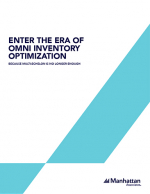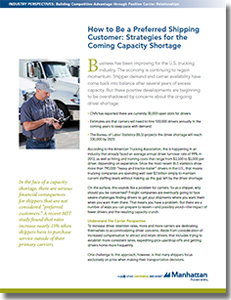How to Be a Preferred Shipping Customer: Strategies for the Coming Capacity Shortage
In the face of a capacity shortage, there are serious financial consequences for shippers that are not considered “preferred customers.”
Business has been improving for the U.S. trucking industry.
The economy is continuing to regain momentum.
Shipper demand and carrier availability have come back into balance after several years of excess capacity.
But these positive developments are beginning to be overshadowed by concerns about the ongoing driver shortage:
- CNN has reported there are currently 30,000 open slots for drivers
- Estimates are that carriers will need to hire 100,000 drivers annually in the coming years to keep pace with demand
- The Bureau of Labor Statistics (BLS) projects the driver shortage will reach 330,000 by 2020
According to the American Trucking Association, this is happening in an industry that already faced an average annual driver turnover rate of 99% in 2013, as well as hiring and training costs that range from $3,500 to $5,000 per driver, depending on experience. Since the most recent BLS statistics show more than 790,000 “heavy and tractor-trailer” drivers in the U.S., that means trucking companies are spending well over $3 billion simply to maintain current staffing levels without making up the gap left by the driver shortage.
On the surface, this sounds like a problem for carriers. So as a shipper, why should you be concerned? Freight companies are eventually going to face severe challenges finding drivers to get your shipments where you want them when you want them there. That means you have a problem. But there are a number of ways you can prepare to lessen—and possibly avoid—the impact of fewer drivers and the resulting capacity crunch.
What’s Related




Favorites





